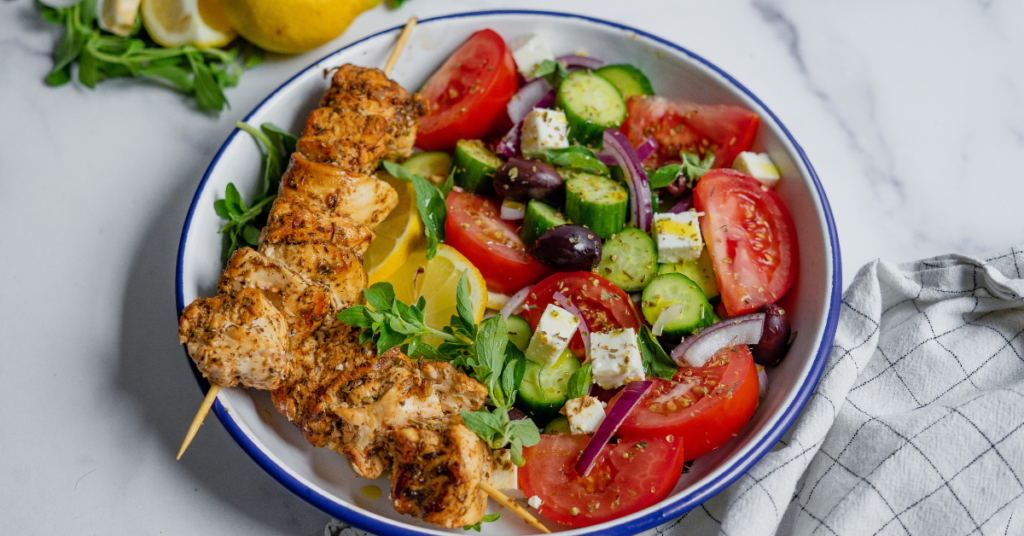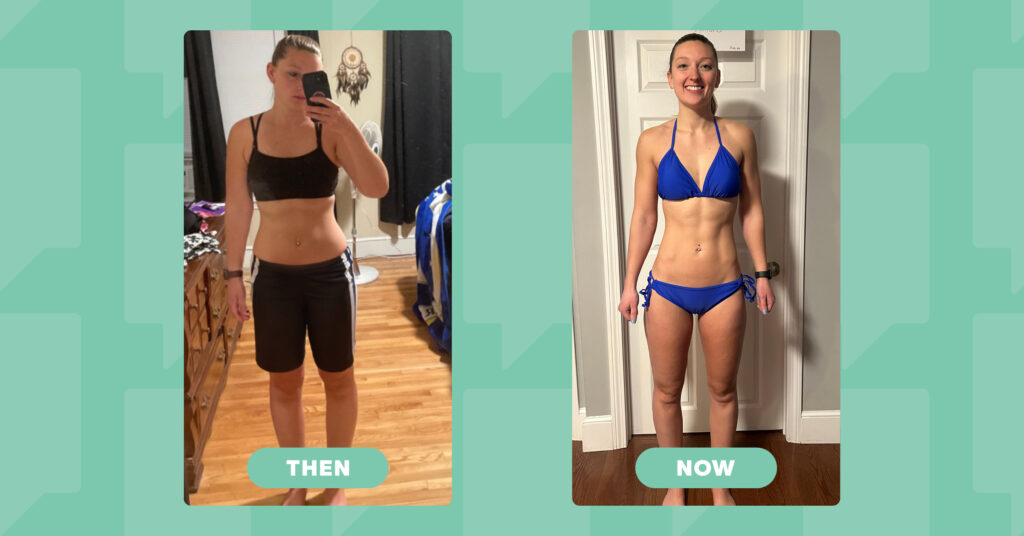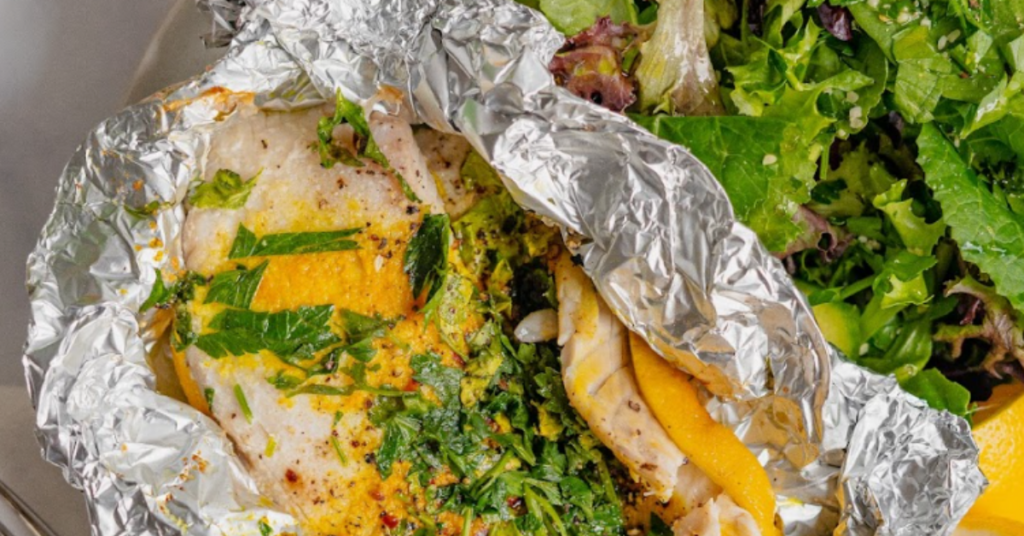Setting Up a Nutrition Plan to Hit Your Body Comp Goals
Start by Defining Your Goal
Setting big goals is a lot of fun. Dreaming big and thinking about what it will feel like to achieve something you want is exciting. If you’re like me, many of you may also find a lot of joy in thinking through all the details of the changes you need to make and the things you will do to hit your goals. The possibilities and opportunities feel truly invigorating and endless during this time! Conversely, everything you need to do to hit your goals can feel overwhelming. You have to make several small changes along the way to achieve any significant change.
My current big goal is to hike to the highest point in all 50 states by the time I turn 50. Doesn’t that sound fun and exciting? It is! However, it can also feel overwhelming if I think about the magnitude of everything I need to do to get there. Instead of stressing about the two-week snow-filled adventure required to reach Alaska’s highest peak at Mount Denali (also the highest peak in North America at over 20k ft elevation), I plan to focus on the key habits and requirements that will eventually get me there. These habits include building up my endurance training, improving my skills, collecting quality gear, and enjoying all the smaller summits along the way.
Many people set big goals related to changing their bodies. These goals can bring the same excitement at the start – imagining what your body will look and feel like is fun. But these goals can sometimes feel overwhelming when you envision how much work you need to do, how many challenges you must overcome, what approach to take, and where to start.
While I may not know much about climbing technical icy terrain in Alaska just yet, luckily for you, I do know a thing or two about losing fat and gaining muscle.
To start, it’s important to get clear on your goals. Many people initially come to Stronger U with a goal to “lose weight.” But what does weight loss mean to you? Do you want to weigh less on the scale? When you think about it, most of us don’t want to just weigh less.
Generally, people really want to either have less of the stuff that can negatively impact our health (excess body fat) or more of the stuff that improves it (hello, muscle!). Most of us want both.
Once you’ve clarified your goals and the changes you want to make, determine what you need to focus on first. While you can lose body fat and gain muscle simultaneously (especially if you’re new to exercise and lifting weights), they are somewhat competing priorities – one requires building more body tissue while the other requires reducing. You’ll likely see better progress if you focus on one, and as we dive into the nutrition recommendations below, it’ll become clear why.
Tracking as a Tool
Before diving into the nutrition plan details, I want to introduce one of the most important tools that will help accelerate the time it takes you to hit your body comp goals. This tool is not new or fancy; you’ve likely tried it before, but it is impactful.
To make a change, you must first know what you are doing, starting with creating awareness of behaviors. That’s right! The key to success is monitoring your habits, including tracking your food to change your body composition.
How else can you know if what you are doing is working or if you need to take a different approach? While many different “diets” can work, food tracking is a tool that can help any of them work more quickly. Self-monitoring is helpful because it creates awareness of behaviors, increases accountability for those behaviors, and allows for assessment of how those behaviors relate to our success in achieving our goals.
The best way to begin tracking your food is to dive right in because you’ll learn a lot. Additionally, tracking often helps people make healthier choices. There are many free tools available out there for tracking your food intake. Some of the most popular options include MyFitnessPal and Cronometer. At Stronger U, we also have an in-app tracking tool available to all members.
Tracking your food intake takes time and can feel challenging for many people, but keep in mind that it’s not something you need to do forever; it’s a tool to help you focus on and achieve your specific goals more quickly.
Setting up Your Nutrition Plan
While people typically make beneficial changes to their diet by tracking their food alone, you’ll see even better success by setting some daily nutrition goals. Nutrition is complex, but when it comes to body composition change, there are a few key components that you want to focus on, including calories and macronutrients – primarily protein.
Calorie Needs
We must first understand the term energy balance to understand what elicits a change in body composition and muscle mass. Energy balance is the term that refers to the comparison between how much energy (calories) we eat and how much energy we expend. It is the most important factor to manipulate when changing your weight and body composition. For weight loss, someone must eat fewer calories than they are expending. They can do this by eating less, moving more, or both. For weight gain, someone must eat more calories than they are expending. They can do this by eating more, moving less, or both. Many factors impact both sides of this energy balance equation, making weight status much more complex than this; however, the difference between the amount of energy you consume and the amount you expend is the primary determinant of your body weight and body composition.
Here’s where we return to the complexity that is the combined goal of both building muscle and reducing fat.
To gain muscle, increase your calorie intake above your needs. Eating more is important so that the extra calories can generate new muscle tissue.
To lose body fat, eat fewer calories than your body needs so that your body breaks down fat stores to use as energy.
You can do some things to give yourself the potential to achieve both simultaneously, such as lifting weights and eating adequate protein; however, it is best to choose a primary goal and focus on that to set the appropriate calorie goal to support it.
Macronutrient Needs
As discussed above, most people’s goal isn’t only to change their weight; they want to change their body composition. While you must manipulate energy balance to change your body composition, calorie source becomes more important.
We get energy into our bodies by eating foods and drinks that contain calories. Calories in food come from three sources: macronutrients. The three macronutrients are protein, carbohydrates, and fats. Protein and carbohydrates provide four calories for every gram, and fat provides nine. In addition to providing calories, all three macronutrients play a key role in your overall health, longevity, and fitness.
Fat Loss and Protein
The amount of protein you consume daily becomes particularly important when working towards body composition change. Protein is the building block for our muscles, so having adequate protein in our diet is necessary to build muscle.
Protein also has a vital role in fat loss by reducing hunger and supporting muscle maintenance. Anytime you eat more calories than you expend, your body stores those extra calories. However, because of the energy-intensive process of converting protein into body fat, protein is the least likely macronutrient your body will store as fat. Protein intake also requires more energy for your body to digest and absorb. While this has a minor impact on total daily energy expenditure overall, it is a factor that adds to the benefits of increasing protein for body composition changes.
When fat loss is your goal, you must eat fewer calories than your body needs, which often means you may feel hungry. Hunger can impact your ability to stick to your program because it’s not comfortable and is hard to ignore. Aiming for more protein is an excellent strategy to help you stick to your plan for better fat loss results because it’s the most satiating macronutrient, keeping you full longer than carbohydrates or fat.
When you are not eating enough calories to support your current body mass (which is intentional when trying to lose body fat), your body doesn’t intuitively know that you want to lose body fat. All your body knows is that it doesn’t have enough energy and starts to break down body tissue to get energy. Eating adequate protein and lifting weights creates the best environment for your body to maintain as much muscle as possible when losing body fat.
Overall, when considering which macronutrients to get your calories from, whether your goal is muscle building or fat loss, set your protein goal first.
Creating Your Nutrition Plan
Now, let’s pull this all together to set some numbers to smash your goals!
Step 1.
Start by setting your calorie goals. Calorie goals are set based on various factors, including age, sex, height, weight, and activity level. There are several evidence-based equations that predict your calorie needs. All these equations are good estimates, but no numbers on paper can account for the human body’s complexities. So, while these equations can be very helpful, they should be treated as a starting point. Once you have your starting point, you should eat to hit these goals for at least a few weeks, but if you are losing fat too quickly or not quickly enough, or if you feel exhausted or uncomfortable, you likely need to make some adjustments.
My favorite estimation tool for setting a starting point for calories is a simple calculation:
- If you are aiming for fat loss: 10-12 x bodyweight (lb.)
- If you want to maintain your current body composition: 13-15 x bodyweight (lb)
- If you want to gain muscle: 16+ x bodyweight (lb)
This will get you in a great ballpark range to start!
Step 2.
Set your protein goals. Protein needs and recommendations are higher anytime you want to change your body composition. Protein recommendations are the same whether your goal is to lose fat or gain muscle. Aim for 0.7 – 1 gram of protein per pound of body weight. If your goal is to lose a moderate to large amount of body fat, you may want to use the weight you are aiming for to set your protein goals. For example, if you weigh 175 lbs but feel 160 lbs is closer to your goal weight once you lose some body fat, you can use 160 lbs as your number for your protein estimation.
You really can’t eat too much protein, so I encourage you to aim towards 1g/lb and see how that feels!
Step 3.
Set your fat goals. We haven’t focused on fat much because the amount of fat you eat does not impact your body composition nearly as much as protein if you stay within your calorie needs. However, fat is an essential nutrient and required for absorbing fat-soluble vitamins, so it’s important to ensure we are eating enough. We recommend setting fat grams next to ensure space within your overall calorie needs to consume adequate amounts of all the essential fatty acids and facilitate the absorption of fat-soluble vitamins. Our bodies cannot make these essential fatty acids, so we must consume them from our diet. Therefore, it is recommended that you do not set fat grams below 0.25/lb of body weight. For most people, an amount between 0.25 – 0.5g/lb is a great place to start.
Step 4.
Set your carb goals. Once you have your protein and fat goals, all the calories remaining should be filled in with carbs.
Below is a sample calculation for a moderately active male who has a fat loss goal and weighs 220 pounds.
Step 1.
Set calorie goals: 220 lbs x 11 = 2420 calories
Step 2.
Set protein goals: 220 lbs x 1 = 220g protein
Step 3.
Set fat goals: 220 lbs x 0.4 = 88g fat
Step 4.
Set your carb goals: 2420 calories – (880 calories from protein + 792 calories from fat) = 748 calories from carbohydrates = ~190g of carbohydrates
Daily nutrition goals = 2420 calories, 220 grams protein, 88 grams fat, 190 grams carbohydrates
Now, we look at a sample calculation for a very active female who has a muscle gain goal and weighs 145 lbs.
Step 1.
Set calorie goals: 145 lbs x 18 = 2610 calories
Step 2.
Set protein goals: 145 lbs x 1 = 145g protein
Step 3.
Set fat goals: 145 lbs x 0.5 = 72.5g fat
Step 4.
Set your carb goals: 2610 calories – (580 calories from protein + 653 calories from fat) = 748 calories from carbohydrates = ~340g of carbohydrates
Daily nutrition goals = 2610 calories, 145 grams protein, 73 grams fat, 340 grams carbohydrates
Once you have your calorie and macronutrient goals, plug them into your food-tracking program.
CONCLUSION
Setting a goal is fun and exciting. It’s an excellent opportunity to reflect on areas of your life that you want to grow and improve. However, creating a plan to follow can sometimes feel overwhelming and challenging, especially for fat loss or muscle-building goals. There are many options; how do you know which is best for you? While this article provided the basics to form the foundation of any nutrition plan, working with an expert for your body composition goals can eliminate any guesswork. A Stronger U Coach considers your lifestyle, goals, and preferences to help you build a calorie and macronutrient plan that meets your unique needs. Once you have a plan in place, your coach offers guidance, support, and accountability so you can implement the plan and stick to it.
Schedule a free consultation with a Coach Concierge to learn more about working with a dedicated Stronger U Coach. They’ll answer all your questions and provide the option to be matched with a coach who aligns with your needs.









